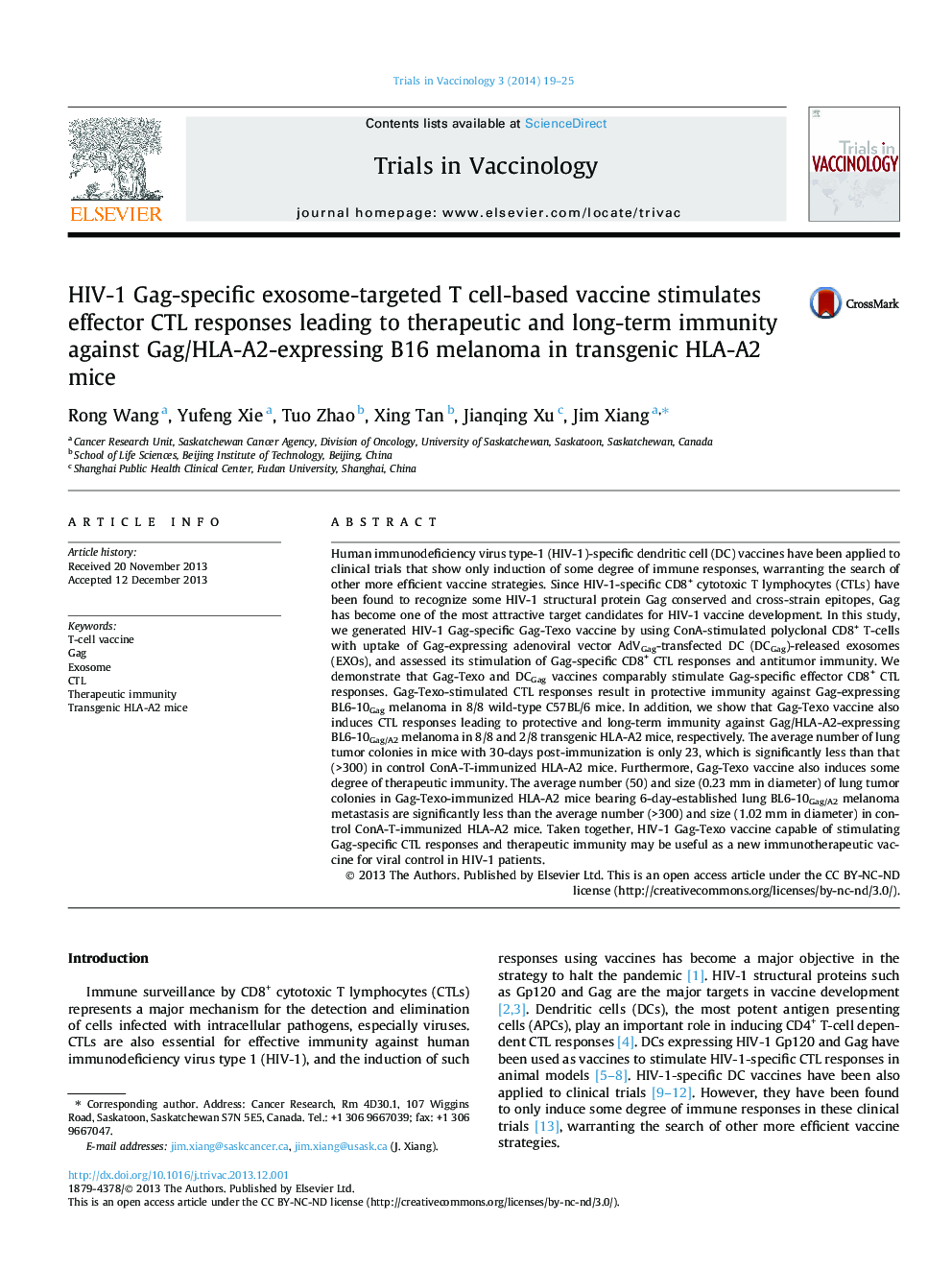| Article ID | Journal | Published Year | Pages | File Type |
|---|---|---|---|---|
| 2474401 | Trials in Vaccinology | 2014 | 7 Pages |
Human immunodeficiency virus type-1 (HIV-1)-specific dendritic cell (DC) vaccines have been applied to clinical trials that show only induction of some degree of immune responses, warranting the search of other more efficient vaccine strategies. Since HIV-1-specific CD8+ cytotoxic T lymphocytes (CTLs) have been found to recognize some HIV-1 structural protein Gag conserved and cross-strain epitopes, Gag has become one of the most attractive target candidates for HIV-1 vaccine development. In this study, we generated HIV-1 Gag-specific Gag-Texo vaccine by using ConA-stimulated polyclonal CD8+ T-cells with uptake of Gag-expressing adenoviral vector AdVGag-transfected DC (DCGag)-released exosomes (EXOs), and assessed its stimulation of Gag-specific CD8+ CTL responses and antitumor immunity. We demonstrate that Gag-Texo and DCGag vaccines comparably stimulate Gag-specific effector CD8+ CTL responses. Gag-Texo-stimulated CTL responses result in protective immunity against Gag-expressing BL6-10Gag melanoma in 8/8 wild-type C57BL/6 mice. In addition, we show that Gag-Texo vaccine also induces CTL responses leading to protective and long-term immunity against Gag/HLA-A2-expressing BL6-10Gag/A2 melanoma in 8/8 and 2/8 transgenic HLA-A2 mice, respectively. The average number of lung tumor colonies in mice with 30-days post-immunization is only 23, which is significantly less than that (>300) in control ConA-T-immunized HLA-A2 mice. Furthermore, Gag-Texo vaccine also induces some degree of therapeutic immunity. The average number (50) and size (0.23 mm in diameter) of lung tumor colonies in Gag-Texo-immunized HLA-A2 mice bearing 6-day-established lung BL6-10Gag/A2 melanoma metastasis are significantly less than the average number (>300) and size (1.02 mm in diameter) in control ConA-T-immunized HLA-A2 mice. Taken together, HIV-1 Gag-Texo vaccine capable of stimulating Gag-specific CTL responses and therapeutic immunity may be useful as a new immunotherapeutic vaccine for viral control in HIV-1 patients.
